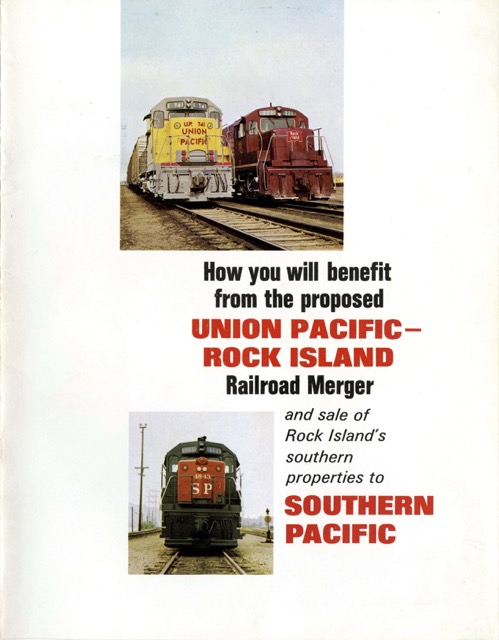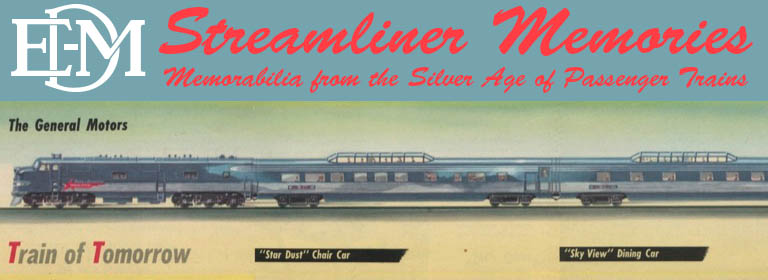In 1964, Union Pacific proposed to merge with the Rock Island Railroad. This merger seemed like it would gain quick approval as, at the time, the government favored end-to-end mergers rather than mergers of parallel lines such as GN-NP and NYC-PRR. The merger would give Union Pacific entry into Chicago, while Rock Island’s Kansas City-Tucumcari line would be spun off to the Southern Pacific. This 1965 booklet describes the proposal.
 Click image to download a 11.1-MB PDF of this 16-page booklet.
Click image to download a 11.1-MB PDF of this 16-page booklet.
So many other railroads objected that the government took ten years to reach a decision. Approval was not granted until 1974, with the conditions that Rock Island’s Memphis-Amarillo line be sold to Santa Fe, while the Kansas City-Colorado line that paralleled Union Pacific’s route was to be sold to the Rio Grande.
This division of the Rock Island was only part of the Interstate Commerce Commission’s plan for four “super railroads” in the West built around BN, SP, UP, and Santa Fe railroads. Under the plan, Union Pacific would get parts of the Rock Island, Chicago & North Western, and Southern Pacific (probably the old Central Pacific). Southern Pacific would get the Kansas City Southern, MKT, and Texas & Pacific. Santa Fe would get Missouri Pacific, Western Pacific, and Rio Grande. Burlington Northern would also get part of the Rock Island. Such visionary plans had been proposed many times in the past, but never went anywhere.
In this case, the Rock Island had, by 1974, been losing money for eight years, and to minimize those losses it deferred maintenance on its rail lines. Union Pacific decided it no longer wanted the decrepit system and walked away from the merger. The next year, Rock Island entered bankruptcy, and by 1984 most of its lines were either torn up or sold to other railroads. Ironically, Union Pacific ended up with more of the Rock than if it had gone through with the merger, while instead of four mega-railroads, the West ended up with just two.
